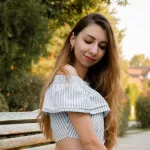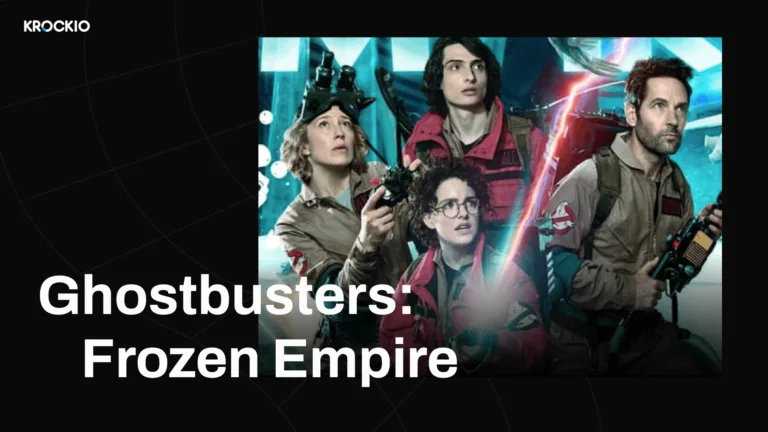Hello, Krock Readers!
We started a new format so it’s our first article in the #krock_interview column.
It reveals how creatives live, work, what they are passionate about, and what are their dreams and obstacles. We divided the interview into 4 blocks of questions and the name of the main categories are Working process, Career, Personal life, and Inspiration.
Meet our first candidate Isabel Wiegand, a young animator, director, puppet maker, and illustrator. She is the Co-founder of Fantasmagorie Studio, a stop-motion animation specialized production based in Rome, Italy.
About the Working Process
— Tell us, what does your job mainly consist of? What work processes take you more time and which do you enjoy the most?
My job varies depending on what project the studio is focusing on. I mainly switch between animation and puppet making depending on what is needed, and I’ve been co-director on two projects: Unraveled, a stop-motion animation student film done during my Master’s Degree at BAU, that I co-directed with Arden Colley, Asil Atay, and Kellie Fay and The Perfect Gift that I am co-directing with Paolo Carbone, stop motion animation project currently in production at Fantasmagorie Studio.
UNRAVELED | A short film about the fragility of emotions within relationships and our inability to manage them.
Animating is a very time-consuming job, and it requires a lot of patience. Every tiny movement is carefully planned, animated, and shot. It is also the one I like most because it allows me to breathe life into unanimated objects and make them come to life one frame at a time. There is something magical and emotional about this process.
— How do you manage the working process and people? What are the secrets of managing creative people to deliver projects on time?
At Fantasmagorie Studio, since it’s a small reality, we all manage the projects as a team. Everyone has their role of course, and everyone knows what they need to do. We arrange roles and we manage ourselves so that we are able to meet deadlines and it’s been always a pleasure to work with my colleagues so far.
— How are the processes in the team structured, who is responsible for what, and how the responsibilities are distributed?
Like I said everyone in our team has their role: Costanza Lettieri is our illustrator and she mainly takes care of character design, storyboarding, and background design, sometimes working in puppet making and prop making. Lara Hosking mainly takes care of character design, puppet making, and animation. Mario Cirillo is our director of photography and cinematographer, and also works on post-production. Mauro Di Bella takes care of administration, marketing and music composing. I focus mainly on puppet making and animation, sometimes working in post-production too. We are all quite flexible and contribute to every project in every way possible though, often building sets and props together and taking care of production as a team.
— Have you experienced procrastination and how did you organize yourself at that moment?
In my experience, I notice that procrastination happens because there is not a clear goal in mind or when your role as a professional within a team is not clear. The way I deal with it is to understand what my role is and what exactly needs to be done, establishing a clear goal and deadline. Once that is clear, I find that usually, everything flows naturally.
— How long does it take you to shoot one stop-motion video and prepare for it, and what does it include? Is it difficult to bring your idea to life?
The time of shooting really depends a lot not only on the length of the video but also on what technique the project requires. Within stop-motion animation, there are numerous techniques such as puppet animation, cutout animation, claymation, and experimental animation. There are many ways to bring ideas to life and we, as a studio, like to explore creatively every possibility, with our clients and with our personal projects. Creating a stop-motion animation is a very long and delicate process and there are many steps to it: it has to be written, a storyboard has to be made, then an animatic. Then there are puppets, props, and sets to be built. Each and every shot has to be properly composed, lit and animated. Then there is post-production and music composition. In the end, the final edit is made and we have our stop-motion animation ready. It is a long and difficult process but it is always worth it.
UN PACCO PER MR. LOUIS | The film is about isolation and how it affects us on a psychological level.
Career
— How do you succeed in fulfilling yourself?
I find my job to be very fulfilling. I get to express myself creatively and do what I’m passionate about. I get to learn more and more with every new project and I constantly feel challenged to find new solutions to bring ideas to life.
— What influenced you to become an illustrator first and then — Co-director of two stop-motion animation studios?
I have always been passionate about art in general. My favorite game when I was a child was to draw and imagine stories, and it still is. When I started my Bachelor’s Degree in Sculpture I already knew I wanted to have a career in animation, but I discovered stop-motion during my second year. I remember I watched Coraline (Henry Selick, 2009, stop-motion animation) and I was completely mesmerized by the beauty and the atmosphere of the world they had created. There was something that struck me in knowing that all that physically existed, it was not only a drawing or a digital world. Once I decided I wanted to pursue a career in that field, I went to a stop-motion specialization course in Rome, where I lived. There I met my colleagues and we founded Fantasmagorie Studio in 2018.
— You’ve participated in numerous film festivals and won several categories. Describe your emotions before and after.
I created Unraveled with Arden Colley, Asil Atay, and Kellie Fay, it was our graduation film for our Master in Stop-Motion Animation at Bau Design College of Barcelona. I remember when we started working on our final project, we wanted to make a film that would mean something to us and resonate with the audience. When we finally finished it, we all were really satisfied with the result. The process of making it was very hard and emotional, we faced several obstacles and overcame them all as a team. We created a strong bond between us and with the film itself. Even before we even started sending it to festivals and getting positive responses I was ever so proud of us and grateful for having had the opportunity to work with such amazing and talented people. When the selections and awards came I was filled with joy, humbled, and grateful to see Unraveled compete with all the other stunning works selected for the festivals.
— What problems did you face during your career or you’ve had good fortune?
The problems I face during my career are tied to the periods of time when there is a lack of projects. It can sometimes happen that there are no clients or no active projects, I think it’s completely normal when working in a creative field, especially in the beginning. It’s important to not get discouraged and always find new ways to reach out to possible clients or to motivate yourself by starting a personal project. There is always someone that is interested in what you do as an artist and wants to collaborate, it’s only a matter of finding each other.
— Share interesting or curious stories you remember.
A funny story I remember from the production of Unraveled, about the importance of problem-solving:
We were right in the middle of production chaos. During the production we had to solve many many problems through trial and error, first trying to find the right story (we even came up with a mathematical equation to reach the audience!), then trying to find the right texture for our props and puppets. All this took away precious time, so we were working tirelessly and at a fast pace to be able to reach our deadline. I had to animate a shot where one of the characters (daughter) was shot from behind and had to stand up, while the other (mother) was shot from the front and looked down at the ground. I needed to find a way to lift the daughter because, for the perspective to work, she needed to be set higher than the mother. Since I didn’t want to waste any time, I started looking around our studio for support that I could glue to the set and that was stable enough to allow me to animate on it. For some reason, I found a can of tomatoes just lying around the studio. No questions asked, I took the can and glued it to the set, using it as a support for the daughter’s puppet. It worked perfectly, the animation came out smoothly and the shot was completed. Once I finished, I invited the other co-directors to come to check the finished shot. They noticed the can of tomatoes and took a picture of it for us to remember. We still laugh about it to this day.
— Do you remember your first experience, where did you start?
My very first experience with stop-motion was a very long time ago, I was just a teenager when I first experimented, maybe 15 years old. I didn’t even know that was ‘stop motion’. I noticed that if I pressed and held the scroll button on my old compact camera, the pictures would go so fast that they looked like an animation. So I decided I wanted to animate a short story. I animated two salt and pepper containers in a story where they met and fell in love. I didn’t have any animation or software skills, and I didn’t even know the name of the technique I was using. I just moved my characters and shot the pictures to tell my story, and had a lot of fun. Years later I found out that was stop-motion and I was animating.
Inspiration and Personal Life
— What drives you?
What drives me is and has always been the desire to express myself, in hopes that someone can relate to some of the things I create. One of my favorite feelings is to relate to artwork or to be moved by it because it makes me feel less alone. Art gives us hope, understanding, relief, and a home. That’s what I hope to give with my work too.
— Where to look for inspiration?
I think inspiration can be found anywhere if you look at things from the right perspective. I find inspiration in people, in films, in music, in life experiences, or even in everyday tasks. Even grocery shopping can spark inspiration if you look at it in the right way!
— Who are you inspired by, the work of other studios?
There are so many amazing artists and studios that I find inspiring. Some of them are Laika Studios, Aardman Studios, Dadomani Studio, Studio Croma, Beast Animation, and many many more. I am also inspired by animators such as Cesar Diaz Melendez and Tim Allen. There are honestly so many artists that inspire me, that it would be impossible to mention them all.
— How do ideas come?
Ideas, to me personally, come from feelings or thoughts. I sometimes think it would be nice to portray a feeling that I’m having and that’s how an idea comes.
— How much time do you allocate to work and how do you spend the rest of your time? Do you manage to maintain a balance between work and life?
The time that I spend working varies a lot, it depends on what I’m working on. Some tasks drain you more than others, some require more creativity and others more focus. It’s hard to keep focused for many hours, so it’s preferable to take breaks. I’m not so good at taking breaks once I get in the flow, I tend to get carried and time passes without me realizing it. I think I managed to find my own balance though, sometimes it can happen that I work for many hours straight because the project requires it or I just get carried away, but then I realize I have to rest so I just take my time to regain energy.
— How not to burn out?
I think it’s very important to know yourself and your limits. It’s important to rest not once you reached your limit, but a little bit before that, so that you don’t reach burnout. When I rest, I personally like to be with my friends and family or just be on my own and relax.
FORM FOLLOWS – LA RANA | A mixture of paint-on-glass animation and scratch-on film animation.
— Do you have any hobbies or rituals and how do you start your day?
I don’t really have hobbies or rituals, the only recurrent thing I do every morning drinks two big glasses of water. From there, I adapt my schedule depending on what I need to do. I also like to exercise, I find that it helps me concentrate and feel strong, present, and capable of dealing better with anything that may occur, so I try to fit that into my daily routine.
— What do you dream about?
I don’t really have a “dream”. I have goals that I like to set for myself, such as becoming a better animator and expanding Fantasmagorie Studio, working on new projects, and keeping doing what I love. Other than that I aspire to live a happy, healthy life, conscious of the environment, and try my best to make the world a better place.
Plans for the Future
— What are your plans for the future?
I plan to keep working on projects with Fantasmagorie Studio, lots of exciting things are ahead. Moreover, I want to get to know more people in the stop-motion and illustration industry, looking to collaborate on an international level. I’m also planning to develop a few personal projects that have been waiting to come to life for a while now.
— What would you recommend for aspiring illustrators, animators, and other creatives?
I think I would recommend the same thing that I recommend to myself: don’t get discouraged. If you know what you want to do and you’re passionate about it, keep trying. Keep improving your skills and get creative not only in what you do but even in searching for jobs. Keep learning, keep being curious, and keep finding new ways to express yourself. Stories and art will never die, people will always need them.
∗∗∗
More of Isabelle’s work can be found on her Vimeo channel or Instagram.
Check out more interviews on Krock:









